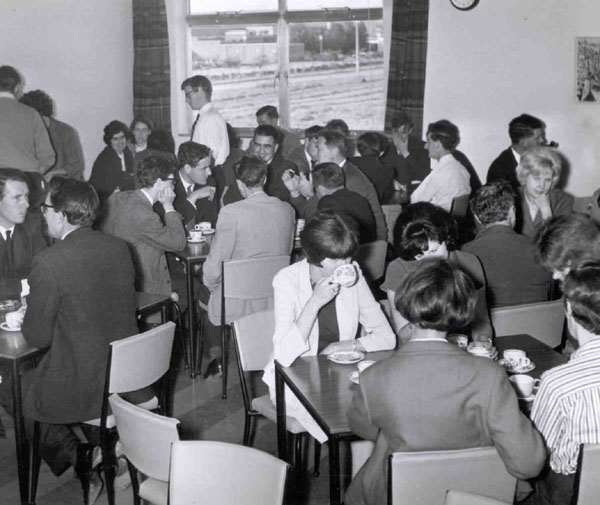


This section of the web site is all about the people involved with the Atlas Computer Laboratory. We have rather arbitrarily broken this down into sections as follows:
Permanent Staff: The permanent staff of the Laboratory. At the moment this gives a few pen portraits of some of the Staff. We would hope to expand this significantly over the years to come. The only in-depth section is the one concerning Jack Howlett, the Laboratory's only Director throughout its life.
Visitors: During its life, the Laboratory attracted a number of long-stay visitors attracted by either the staff or the computing power of the Laboratory or both. They stayed at the laboratory anywhere from a few months to over a year.
Users: The Laboratory was set up to provide a comprehensive service to users with demanding applications who could not get resources elsewhere. A block of small cells were provided for users much as hot desking is used in industry today. The cells could be booked for extended periods while a user was developing software or performing some demanding production runs. These users became well acquainted with the permanent staff and it was difficult to sort out who was who.
Politics: The cost of getting the Laboratory built and the funding provided took several years of negotiation and there were a number of well-known scientists and computer professionals who gave both their time and expertise to ensure that the Laboratory was a success. This section tries to give pen portraits of some of these influential people. The Laboratory was run by an Atlas Computer Committee which had three different incarnations. Initially its role was to set up the Laboratory for the National Institute for Research into Nuclear Science (NIRNS). The second established the service for the newly formed Science Research Council (SRC) that took over the ownership of the Laboratory. The third supervised the Laboratory through a phase where the growth in computing power within the university sector meant that it was no longer providing most of the computer power to the community. Its role changed to one of providing guaranteed computing power to grant holders from the SRC and other Research Councils. The third Committee also oversaw the eventual demise of the Laboratory as an independent entity when its functions were split between the two exiting Nuclear Physics Laboratories, Rutherford and Daresbury, in a major reorganisation by SRC to achieve savings. The Laboratory had a number of champions who had an effect on the organisation of the Laboratory and its future in one or more of these phases.
Companies: Establishing a UK computer industry to rival that of the USA required significant commitment from both government and industry. Companies, particularly Ferranti and later ICL, who had a long relationship with the Laboratory were major partners in the project that established the Laboratory. Without strong working relations between with these companies based on mutual respect, much less would have been achieved.
Clubs: The Atlas Laboratory was small enough for all the staff to know each other. Being on a large site with the Harwell and Rutherford Laboratories, much sport took place both in the lunch hour and early evenings. The Atlas staff participated in most of the activities on offer often with staff press-ganged into making up the numbers for team events like cricket, football and rounders.
Staff administrative structure (Organograms): When departments were restructured, revised organograms were issued.